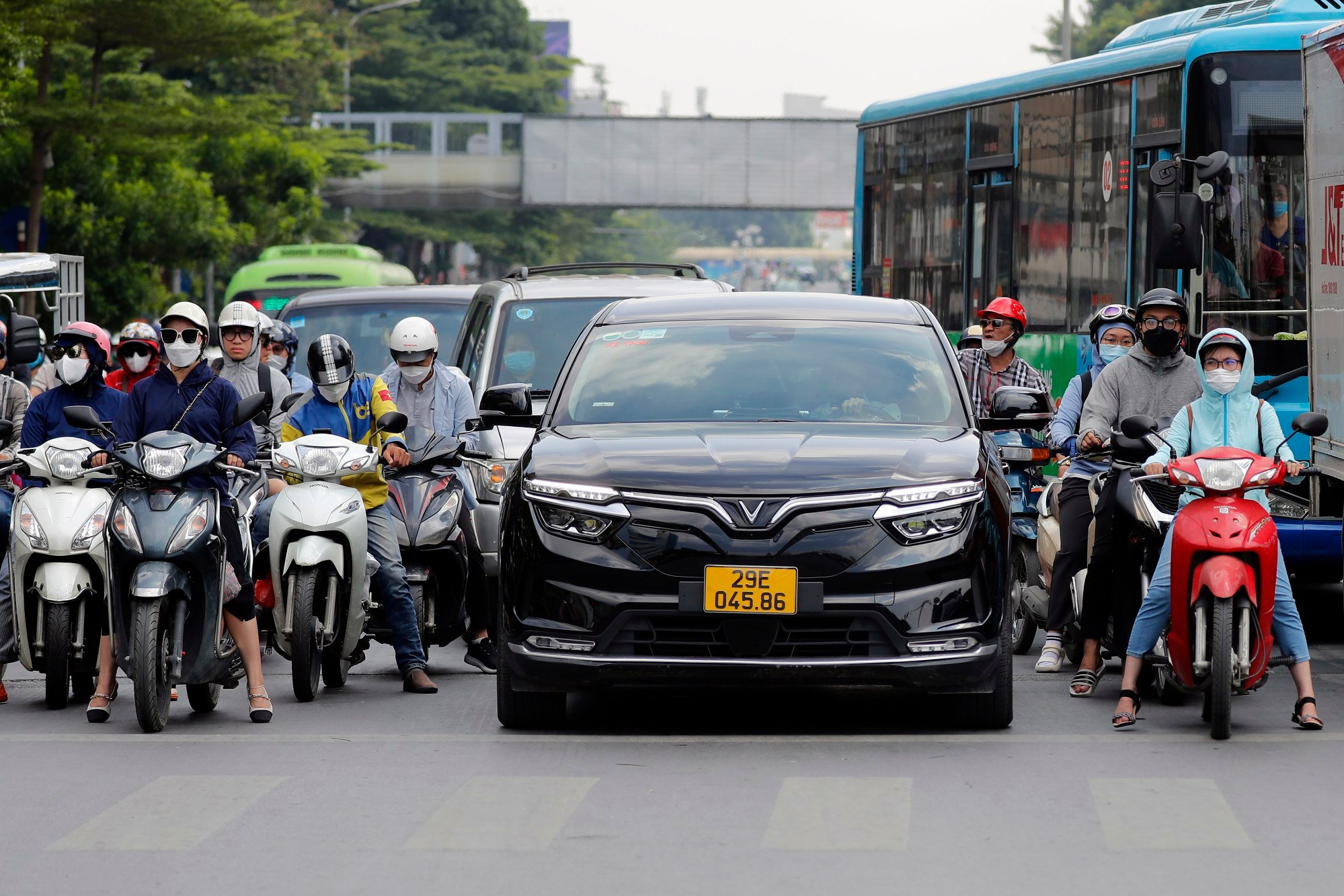
Vietnam’s VinFast appears to be going places. But its US entry reveals issues under the hood
- VinFast has been getting lots of hype, but it has many underlying problems – including poor finances, opaque governance and a reliance on relationships with the government
- The US has a stronger market and regulatory environment, which could sink the Vietnamese EV maker’s hopes of a turnaround
Since 2022, VinFast has only produced EVs, but due to strong competition, it has found it difficult to establish itself in the Vietnamese car market, which has sales of roughly 400,000 vehicles annually.
Despite the hype, they’re likely to fail for two reasons.

Cutting corners
Three top Western executives left the company this year, and its governance is opaque.
Rather than focus on making and selling cars profitably, it has put its efforts into PR and government relations.
The media hype for its first shipment to the US is a case in point.
The company still has not sorted out all permitting for sales and still does not have a proper distribution plan. It has built 122 showrooms nationwide, but managed just 128 new-vehicle registrations in the first six months of the year. They may have to work through third party dealers, diminishing revenue.

Rocky finances
Second, its finances are precarious. Like any new car company, VinFast is plagued by high operating costs and debt. Every vehicle they build is already at a substantial loss. With a massive new factory in Haiphong, Vietnam operating at a fraction of its annual capacity of 250,000 vehicles, VinFast is haemorrhaging red ink.
VinFast had losses of US$1.3 billion in 2021 and US$2.1 billion in 2022. In the first quarter of 2023 alone, the company posted losses of US$598 million.
It’s also off to a rocky start in the US. All 999 cars in its first US shipment were immediately recalled due to dangerous software glitches. The returns were made easier by the fact that only 111 vehicles were in the hands of customers at that time, according to a federal filing.
Now, VinFast has to contend with several billion dollars in new debt for their North Carolina plant, which is already a year behind schedule. They are still waiting for a US$1.4 billion federal loan, as labour costs are expected to soar. Most of VinFast’s debt is in US dollars, adding currency risk, as the Vietnamese economy is under strain and dependent on a weak dong.
VinFast has been able to get this far because of its parent company, the sprawling conglomerate VinGroup, has already spent US$9.8 billion. In April 2023, VinFast received another US$1.5 billion injection of funds from VinGroup and a US$1 billion personal loan from founder Phan Nhat Vuong.
The US has a stronger market and regulatory environment. Southeast Asian crony capitalism won’t fly
The cash cows of VinGroup are its real estate divisions, which between 2020 and 2022, made substantially more revenue than the other VinGroup divisions combined.
That is only possible because the government offers – until it doesn’t – cheap land, and makes lending from state banks and cheap commercial paper available to them. What’s happening in China’s real estate market is also affecting Vietnam. A credit crunch has led to unfinished construction, defaults and declining real estate prices.
Reuters reported in March that VinHomes is shedding US$1.5 billion in assets to a Singaporean firm to raise desperately needed capital, never a good sign from the “cash cow”. VinGroup has bet everything on VinFast, but is running out of non-real estate assets to keep it afloat.

Not too big to fail
So why is VinFast doing this when it seems likely to fail?
The US market should be VinFast’s lifeline, but it may sink the company. VinFast has grown accustomed to opaque accounting and governance, subsidies, a weak regulatory environment and warm relationships with the government.
The US has a stronger market and regulatory environment. Southeast Asian crony capitalism won’t fly. Unlike Vietnam, the US government does not pick winners and losers. While North Carolina offered concessionary land and lower taxes, that’s the extent of it. VinFast is not ready for a competitive market.
VinFast and its parent VinGroup benefit from moral hazard by being a “national champion”. They’re hoping they are too big to fail, and as the Vietnamese government’s corporate face internationally, they will always be bailed out, leading to more risks and debt, rather than producing cars that can compete globally.
So while the business world is abuzz with the PR flash and VinFast’s astronomical valuation, there are plenty of reasons to be sceptical. Another market player is good for making the industry more competitive and cheaper, and it would be great if VinFast succeeded, but they have too many underlying problems that cannot be ignored.
Zachary Abuza is a professor at the National War College in Washington, DC, where he focuses on Southeast Asian politics and security issues. The views are his own and do not reflect those of the National War College or Department of Defense.


